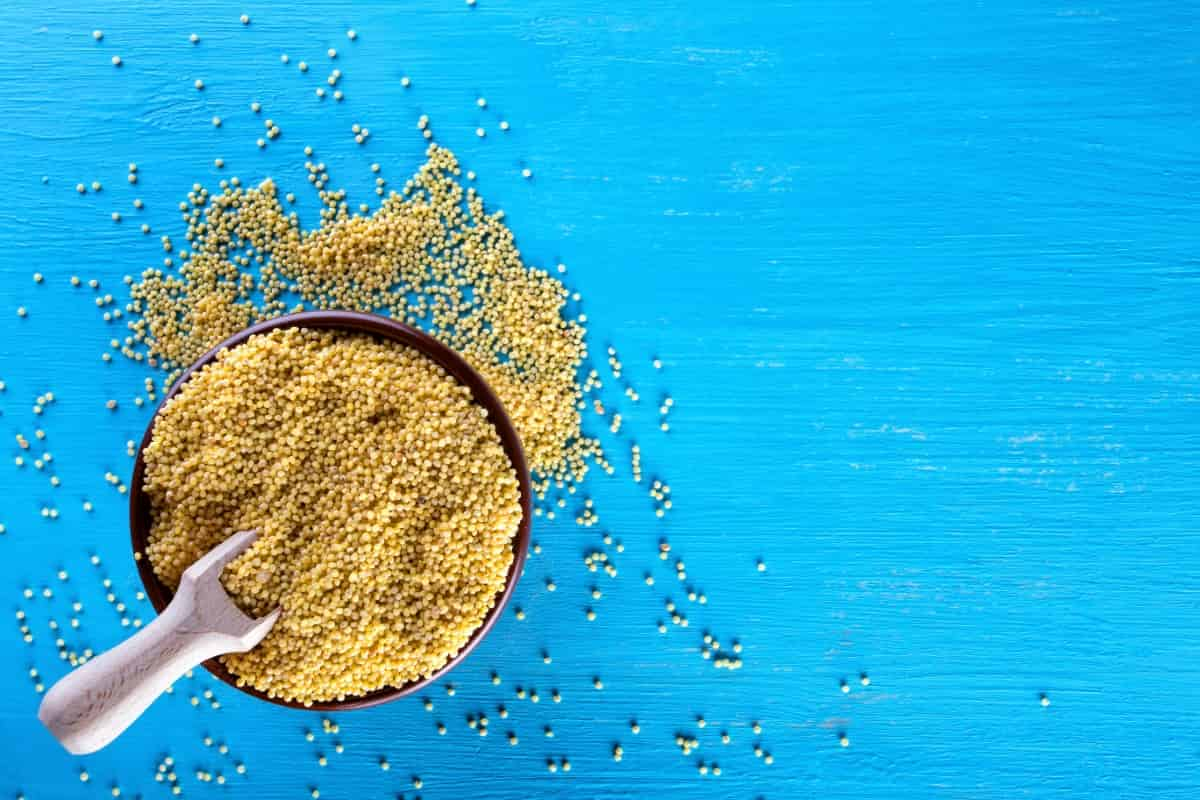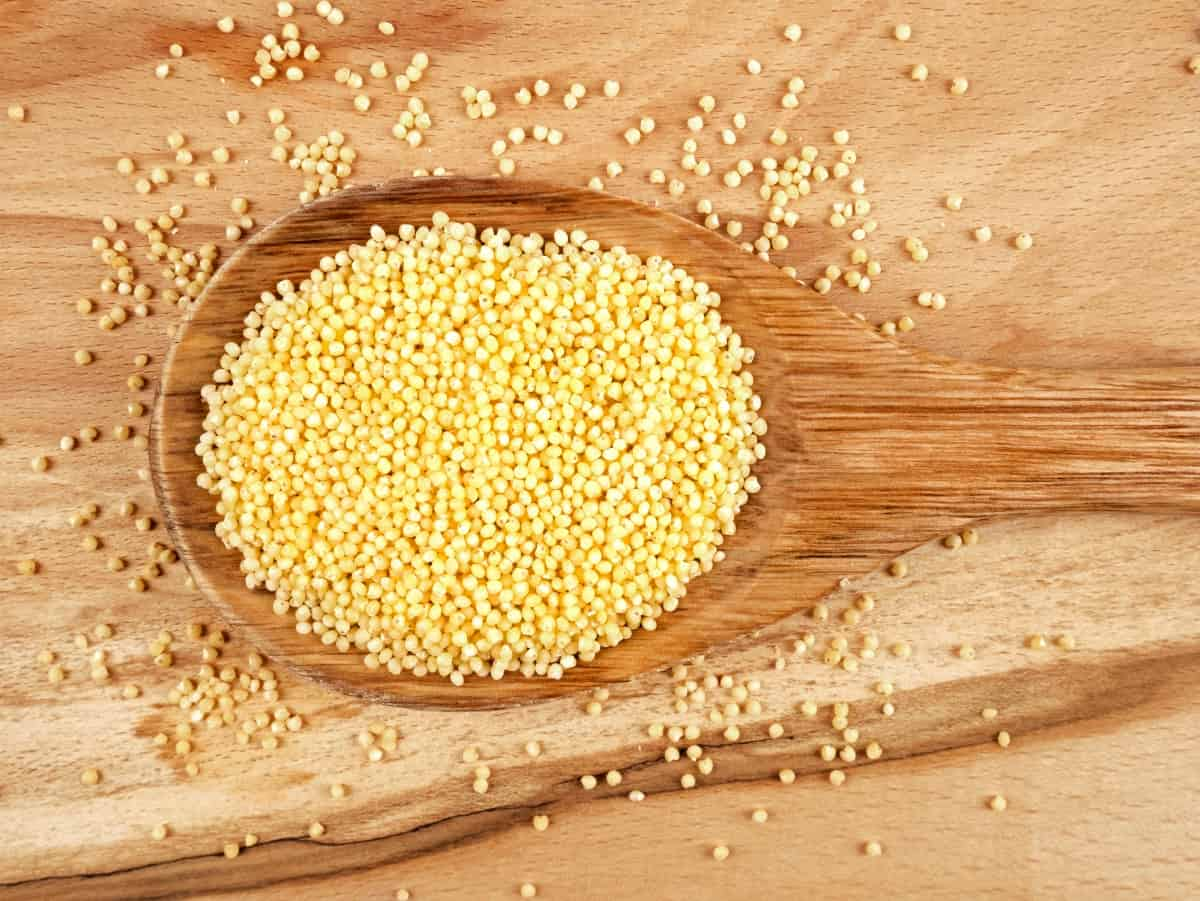Cultivating Kodo millet (Paspalum scrobiculatum) on a one-acre scale has gained attention as a promising economic venture. This study explores the economics of Kodo millet cultivation, assessing its profitability and potential as a viable option for farmers. By analyzing input costs, yield potential, market demand, and pricing trends, this research aims to unlock the untapped potential of 1-acre Kodo millet cultivation, providing insights into its economic viability and profitability.

1-Acre Kodo Millet Cultivation Cost and Profit
What is Kodo Millet Cultivation?
Kodo millet (Paspalum scrobiculatum) is a drought-tolerant annual grass species cultivated for its nutritious grains. It typically grows to a 60-100 cm height and has slender, erect stems with broad leaves. The plant produces compact, cylindrical flower spikes called panicles containing small, shiny grains. Kodo millet is known for its high protein content, rich in essential amino acids, and is a source of fiber, minerals, and antioxidants. It is primarily grown in India and other parts of Asia as a staple food and fodder crop.
Market and Demand for Kodo Millet
Madhya Pradesh, a state in India, faces severe malnutrition issues, with 60% of children being underweight compared to the national average of 43%. Kodo millets, known for their high phosphorus and iron content and higher protein levels than rice, can help address these nutritional deficiencies.
However, millet has been largely replaced by rice. The growing national and international recognition of millet as a gluten-free superfood presents an economic opportunity for smallholder farmers in India, benefiting local livelihoods, nutrition, and resilience. Local farmers should capitalize on this momentum before external suppliers fulfill the increasing demand.
Best High-Yielding Variety for Kodo Millet Cultivation
- Different states in India have specific varieties of Kodo millet suited to their respective regions.
- In Madhya Pradesh, the varieties include JK 439, JK 137, JK 106, JK 98, JK 65, JK 48, JK 13, RBK 155, RK 390-25, GPUK 3, DSP9-1, and TNAU 86.
- Tamil Nadu cultivates KMV 20 (Bamban), CO 3, TNAU 86, GPUK 3, and RK 390-25. Gujarat grows GK 2, GK 1, GPUK 3, JK 65, JK 13, and RK 390-25.
- Chhattisgarh has Chhattisgarh Kodo-2, Jawahar Kodo 137, RBK 155, Indira Kodo 48, Indira Kodo 1, GPUK 3, JK 439, JK 98, JK 65, Chhattisgarh-2, RK 390-25, and TNAU 86.
- Karnataka cultivates GPUK 3, RBK 155, RK 390-25, and TNAU 86.
- Andhra Pradesh and Telangana primarily grow RK 390-25 and TNAU 86 varieties.
- These region-specific varieties are selected based on their adaptability and performance in the respective states.
Best Package and Practices for Kodo Millet Cultivation/Farming
Climate Requirements: Kodo millet is primarily grown in warm, dry climates like India. It exhibits high drought tolerance and can thrive in areas with only 40 to 50 cm of annual rainfall.
Soil Preferences: Kodo millet can be cultivated in various soil types, from gravelly and stony upland poor soils to loam soils. However, deep, loamy, and fertile soils enriched with organic matter are ideal for maximizing yields. Well-drained soils with adequate moisture retention are crucial for uninterrupted crop growth.
Sowing Time and Season: For Kharif cultivation, the suitable sowing time for Kodo millet is between June and July. Sowing at the onset of the monsoon is beneficial for achieving optimal yields. The specific sowing window varies across different states in India, generally ranging from the middle of June to the end of July.
Method of Sowing and Spacing: Broadcasting or line sowing is recommended for Kodo millet. A spacing of 22.5 cm between rows and 10 cm between plants, with a sowing depth of 3-4 cm, is advised. Line sowing facilitates inter-cultivation and effective weed management.
Manures and Fertilizers: Incorporating organic manures improves soil water retention and provides essential nutrients to the crop. Approximately 5-10 t/ha of farmyard manure (FYM) should be applied about a month before sowing. Additionally, it is recommended to apply 40 kg of nitrogen (N), 20 kg of phosphorus pentoxide (P2O5), and 20 kg of potassium oxide (K2O) per hectare at the time of sowing. In high rainfall areas, N can be split, with half applied at sowing and the remaining half at 35-40 days after sowing.
In case you missed it: Millet Pest Control: Best Practices and Strategies

Seed Treatment: Treating kodo millet seeds with Ceresan at 3 g/kg of seed is recommended to prevent seed-borne diseases.
Irrigation Management: During dry periods, Kodo millet requires irrigation every 4-7 days, depending on drought severity and soil type. In the case of limited irrigation facilities, the first irrigation can be given 25-30 days after sowing and the second at 40-45 days after sowing. Proper drainage is essential to remove excess rainwater during heavy and continuous rains.
Weed Control: Early weed control is crucial for kodo millet’s initial growth stage. Typically, two weddings at an interval of 15 days are sufficient. Hand hoeing or wheel hoeing can be employed for line-sown crops. In high rainfall areas, pre-emergence application of Isoproturon at a rate of 0.5 kg a.i./ha can effectively control weeds, while post-emergence application of 2,4-D sodium salt (80%) at 1.0 kg a.i./ha can control broad-leaved weeds.
Intercropping: In Madhya Pradesh, intercropping kodo millet with pigeon peas in a 2:1 ratio is recommended. Intercropping with green gram/black gram (2:1 ratio) or soybean (2:1 ratio) can also be practiced.
Crop Rotation and Cropping Sequence: In Madhya Pradesh, a sustainable cropping system includes crop rotation of Kodo millet with soybean or Kodo millet with Kodo millet or niger-Kodo millet.
Pest and Disease Management: The major pests affecting Kodo millet include shoot flies, termites, and stem borers. Shoot fly can be managed by applying Carbofuran 3G granules at 20 kg/ha in furrows before sowing. Termites can be controlled by applying Malathion 5% dust at 20-25 kg per hectare before sowing. Rust, a common disease, can be partially controlled by spraying a 0.2% solution of Mancozeb 75 WP. Head smut, another seed-borne disease, can be managed by growing tolerant cultivars and treating seeds with Thiram and hot water treatment.
Harvesting: In the Kharif season, Kodo millet is ready for harvest in September or October in northern India
Cost of Cultivation for 1-Acre Kodo Millet Cultivation/Farming
The components included in the cost of cultivation for kodo millet typically comprise land rent or ownership, seeds, manures and fertilizers, irrigation, labor, pesticides, machinery and equipment, and miscellaneous expenses.
| Components | Cost (in INR) |
| Land Rent/Ownership | 1000-1500 |
| Seeds | 1000-1500 |
| Manures and Fertilizers | 1500-2000 |
| Irrigation | 1000-1500 |
| Labor | 2000-2500 |
| Pesticides | 500-1000 |
| Machinery and Equipment | 500-1000 |
| Miscellaneous Expenses | 500-1000 |
| Total | 10000-13000 |
Total Returns and Net from 1 Acre Kodo Millet Cultivation/Farming
- Cost of cultivation: ₹10,000 (minimum estimate)
- Yield per acre: 9 quintals (minimum estimate)
- Price per quintal: ₹3,056
- Total Returns: Total Yield = Yield per acre × Price per quintal Total Yield = 9 quintals × ₹3,056/quintal Total Returns = ₹27,504
- Net Income: Net Income = Total Returns – Cost of Cultivation Net Income = ₹27,504 – ₹10,000 Net Income = ₹17,504
- The total returns from 1 acre of kodo millet cultivation would be ₹27,504, and the net income (profit) would be ₹17,504.
Challenges and Risks in Kodo Millet Cultivation/Farming
Challenges include Climate change, including unpredictable rainfall patterns, which pose a risk to yield stability. Pest and disease infestations, such as shoot fly and rust, can cause significant crop losses. Inadequate irrigation facilities, limited access to quality seeds, and insufficient knowledge about cultivation practices further add to the challenges farmers face.
In case you missed it: Effective Weed Management for Millet Farming

Conclusion
Exploring the economics of 1-acre kodo millet cultivation reveals its potential for profitability. With proper planning, management, and market opportunities, farmers can harness the economic benefits of kodo millet farming while contributing to sustainable agriculture and food security.
- Feed Your Flock for Less: Top 10 Tips to Save on Chicken Feed
- Ultimate Guide to Ossabaw Island Hog: Breeding, Raising, Diet, and Care
- Hatching Answers: The Top 10 Reasons Your Chickens Aren’t Laying Eggs
- Eggs and Economics: Breaking Down the Cost of Raising Backyard Chickens
- Defend Your Greens: Proven Methods to Keep Iguanas Out of Your Garden
- Ultimate Guide to Cinnamon Queen Chicken: A Comprehensive Guide for Beginners
- Ultimate Guide to California Tan Chicken: Breeding, Raising, Diet, Egg-Production and Care
- Ultimate Guide to Marsh Daisy Chicken: Breeding, Raising, Diet, and Care
- 10 Types of Chicken Farming Businesses You Can Start for Profits